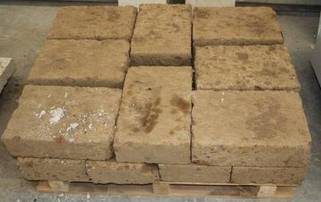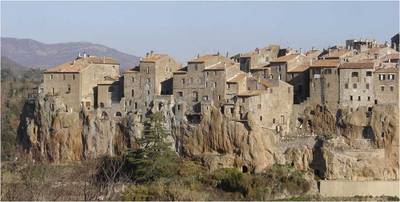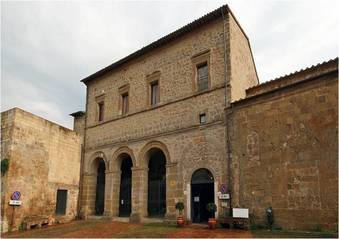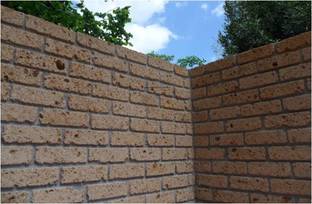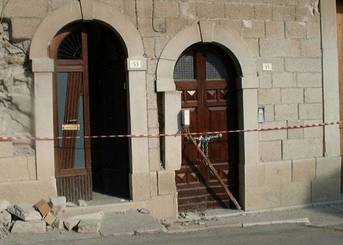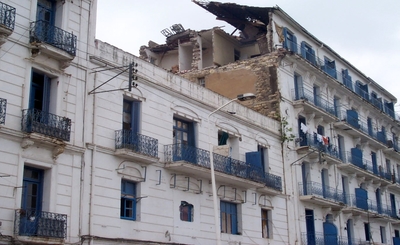-
Notifications
You must be signed in to change notification settings - Fork 0
Tuff [SPTU]
Tuff is an igneous volcanic rock made up of rock and mineral fragments that are compacted with volcanic ash. In general, the grain size of the ash is below 4 mm (above 4 mm: volcanic breccia). The colour of tuff is variable (and strongly depends on its weathering and chemical composition), but it is mostly greyish, brown, or yellow It is a low-density, high-porosity rock that is often soft and porous and can therefore be scratched by metal objects. It is a relatively soft stone and it has been widely used for masonry construction in regions where it is available (e.g. Italy, Armenia, etc.).
Tuff stone blocks, Italy (A. Benedetti)
A view of Sovana, Italy - most buildings are built using tuff masonry and the city was built on a tuff cliff (http://ilcasale1742.it/en/)
Tuff stone was used for the construction of Bourbon del Monte Palace (16th century), Sovana, Italy (www.fototoscana.it)
Tuff stone used in modern wall construction, Italy (A. Benedetti)
A wall built using dressed tuff stone exterior wythe over a rubble masonry in San Giuliano damaged in the 2002 Molise earthquake, Italy (A. Benedetti)
Tuff stone masonry in Algiers, Algeria was affected by the 2003 Boumerdes earthquake (M. Farsi)
Wiki
Extended GEM Building_taxonomy for Multi-risk assessment
1. DirectionDIRECTION
2. Material of Lateral Load Resisting System MAT_TYPE
3. Lateral-Load Resisting System LLRS
4. Height HEIGHT
5. Date of construction or retrofit DATE
6. Occupancy OCCUPCY
7. Shape of the Building Plan PLAN_SHAPE
7.1. Building Position within a Block POSITION
8. Structural Irregularity STR_IRREG
9. Non- Structural Exterior Walls/ Openings NONSTRCEXW
10. Roof ROOF
11. Floor FLOOR
12. Foundation FOUND
Expanding the former towards an Exposure Database for Multi-Hazard Risk Analysis EXP-MULTI-H-R-An
